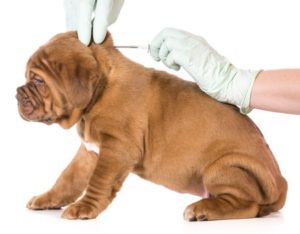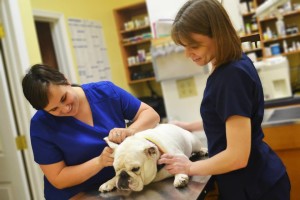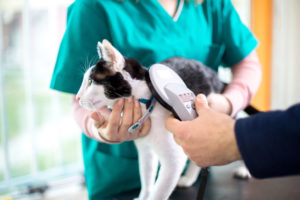 Many people consider their pet as a member of the family. Since we see them as one of us, shouldn’t we be taking the extra step to ensure their safety? Accidents happen, and sometimes our pets get lost. Microchipping is a safe and effective technology that allows us to recover our missing pets when these accidents do happen.
Many people consider their pet as a member of the family. Since we see them as one of us, shouldn’t we be taking the extra step to ensure their safety? Accidents happen, and sometimes our pets get lost. Microchipping is a safe and effective technology that allows us to recover our missing pets when these accidents do happen.
How is the Microchip Inserted?
Microchipping is a very quick process that can be done at a scheduled vet appointment. The implantation procedure is simple and virtually painless for your pets. The chip is inserted by one of our veterinarians through an injection, much like a vaccination. After the chip is inserted, you and the veterinarian can go through the microchip registration process together.
How Does the Microchip Work?
Brand new microchip technology has completely changed the microchip and recovery process to one that is very simple. The old system required tedious work, only for the chips to often not be in the database. Luckily, a new system was created by a group of rescuers known as Save This Life, and gave this process a much-needed update.
Now, if your pet becomes lost and is taken to a clinic or vet equipped with a scanner, the process to be reunited is much quicker. With this new system, all the microchips are available with a quick Google search. Simply have someone from the animal clinic scan for a microchip and search the chip number on Google. This will pull up your contact information and send you a GPS location with the location that your pet was found. Additionally, a Lost Pet Alert will be sent out to shelters and rescues within a 25-mile radius of your pet’s last known location. Read more
 Having a dog with behavioral problems can be a trial. Whether your dog is barking nonstop, chewing furniture and shoes, begging, digging, or jumping up, there are some steps that you can take to prevent or change the behavior. Yet sometimes it is important to get help training your dog.
Having a dog with behavioral problems can be a trial. Whether your dog is barking nonstop, chewing furniture and shoes, begging, digging, or jumping up, there are some steps that you can take to prevent or change the behavior. Yet sometimes it is important to get help training your dog. 









